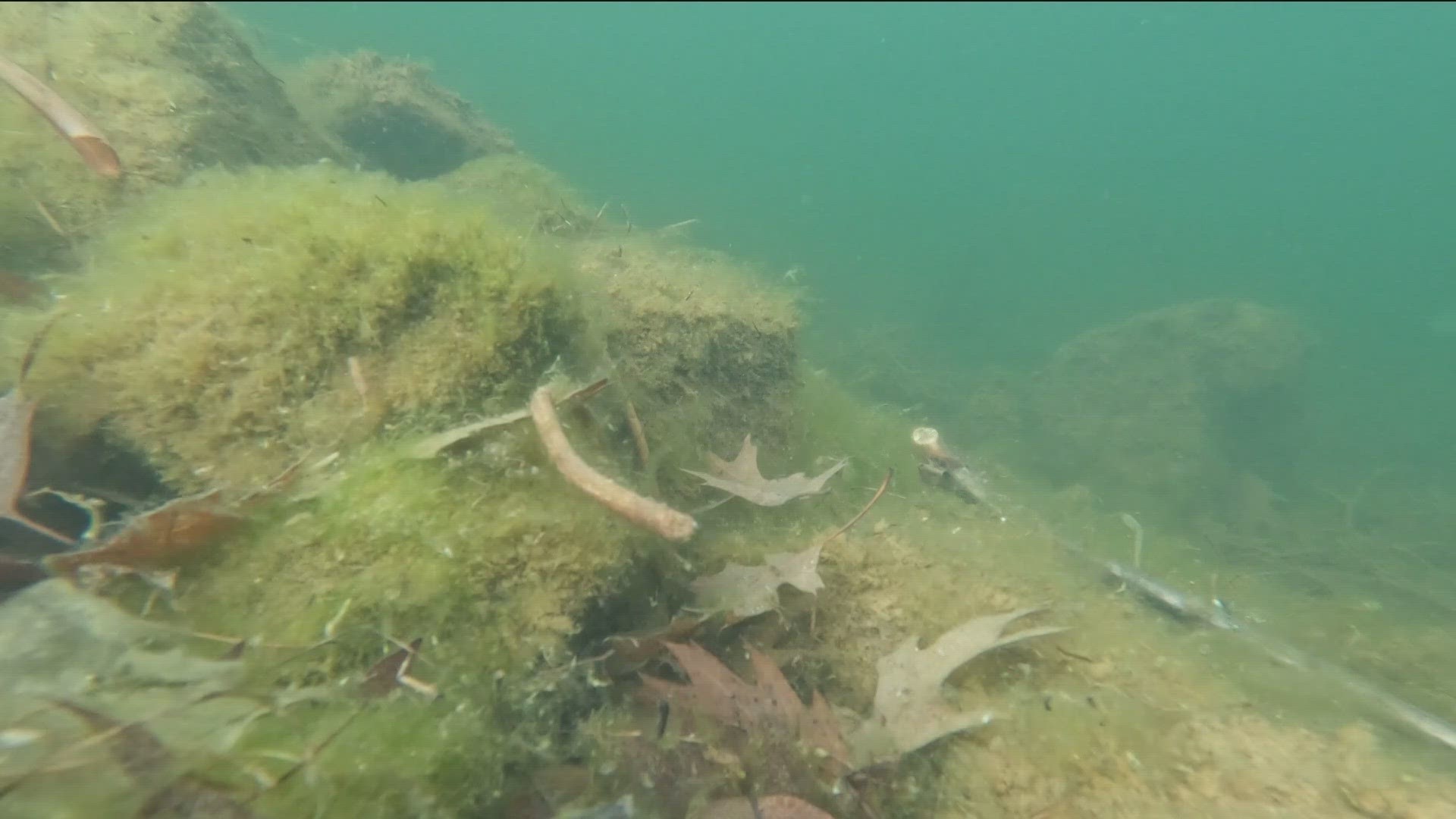MINNEAPOLIS — It seems like no matter where we look, our winter – or lack thereof – has changed so much of our normal here in Minnesota. Now, there's new concern that this winter will have a lasting effect months away on our summer.
"It's really changed, this one year to the next," Alan Tucker, president of Supreme Marine in Minneapolis, said. "I got a couple boats in this week for new motors, and it's picking up faster than it usually does."
Business is booming for Tucker right now – something he's not used to seeing this time of year.
Thanks to our weak winter, business may also go up this summer because of what's growing at the bottom of our lakes.
"Even though these blades are sharp, the weeds just kind of conglomerate over to where they just end up being a ball, and that makes it so the boat just doesn't go anywhere," Tucker said. "Of course, if it isn't going anywhere, it's overheating."
It's not just any kind of weed. Michael Verhoeven, a researcher at the University of Minnesota says there's one that stands out to him this year, called curly-leaf pondweed.
"I think as recreationists, it can be really frustrating to see our lake choked with weeds, so to speak, so early in the year," he said.
Verhoeven's research focused on our lack of snowfall. Because there's less snow coverage on our lakes, there's more light that's able to reach deeper, allowing this invasive species to grow.
"Lake Minnetonka was not frozen over until some days into January," Verhoeven said. "That meant that no snow falling up until that point was able to accumulate and start blocking that light."
That means this plant will likely grow denser than before. Verhoeven says that there's roughly 750 lakes in Minnesota that are known spots for curly-leaf pondweed.
Because of this growth, it could wreak havoc on boats and jetskis. Verhoeven says there are treatments available to remove this, but they're not an overnight fix.
"Especially these invasive species, I think seeing an abundance of these plants could get a little bit of a knee jerk reaction from some of our lake associations," he said. "And my study has shown that really the knee-jerk reactions aren't what's effective, what's effective is the long term control strategies."
There is some good news – although this plant is in many bodies of water, it doesn't necessarily mean it's widespread throughout them, and could be isolated in specific portions. Keeping it contained is also a priority. Verhoeven emphasizes that those with water equipment make sure to clean properly to avoid any cross-contamination.
Verhoeven says this plant also tends to die back down by the Fourth of July.
Watch more local news:
Watch the latest local news from the Twin Cities and across Minnesota in our YouTube playlist:
WATCH MORE ON KARE 11+
Download the free KARE 11+ app for Roku, Fire TV, Apple TV and other smart TV platforms to watch more from KARE 11 anytime! The KARE 11+ app includes live streams of all of KARE 11's newscasts. You'll also find on-demand replays of newscasts; the latest from KARE 11 Investigates, Breaking the News and the Land of 10,000 Stories; exclusive programs like Verify and HeartThreads; and Minnesota sports talk from our partners at Locked On Minnesota.
- Add KARE 11+ on Roku here or by searching for KARE 11 in the Roku Channel Store.
- Add KARE 11+ on Fire TV here or by searching for KARE 11 in the Amazon App Store.
- Learn more about the KARE 11+ app for Apple TV in the Apple App Store.
- Learn more about KARE 11+ here.

